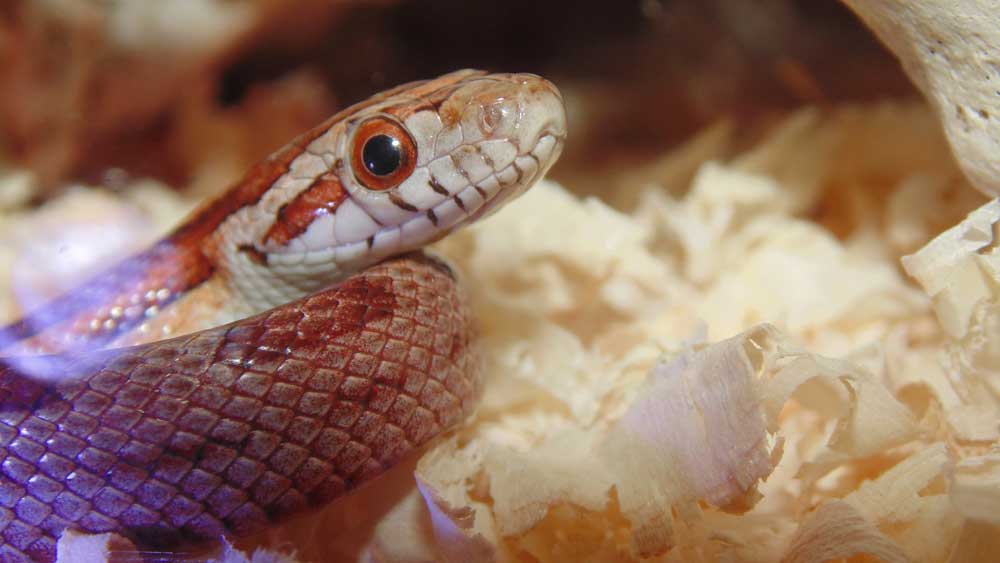Substrates provide a variety of benefits, including a bed for your animals to crawl around, sleep on and hide in.
Substrates are one of the most important elements to your herp’s enclosures. They provide a variety of benefits, including a bed for your animals to crawl around, sleep on and hide in. Some help to regulate humidity while others provide burrowing or tunneling capabilities. Substrates also help with temperature in that they can provide spots for your animals to crawl into when it gets cold as well as provide a medium for plants to thrive in bioactive enclosures. Some of these substrates are great heat conductors. While there are other substrates such as tiles and larger rocks for use with certain herps, we present 10 popular substrates that are widely available at your local reptile store.
Sphagnum Moss
Sphagnum moss is a brown and green fibrous material that can be used to retain humidity levels in a terrarium while also creating a natural floored landscape. It can come from rainforests in Oregon and other lush rainforests and wet habitats that serve as suitable places for the moss to flourish. It can be used for bioactive terrariums as a “soil conditioner” in order to balance the pH levels of the soil and environment within the terrarium. Choose the sphagnum moss with no dyes or chemicals, as it’s useful and safe for animal terrariums. Colored or dyed mosses from craft stores should not be used.
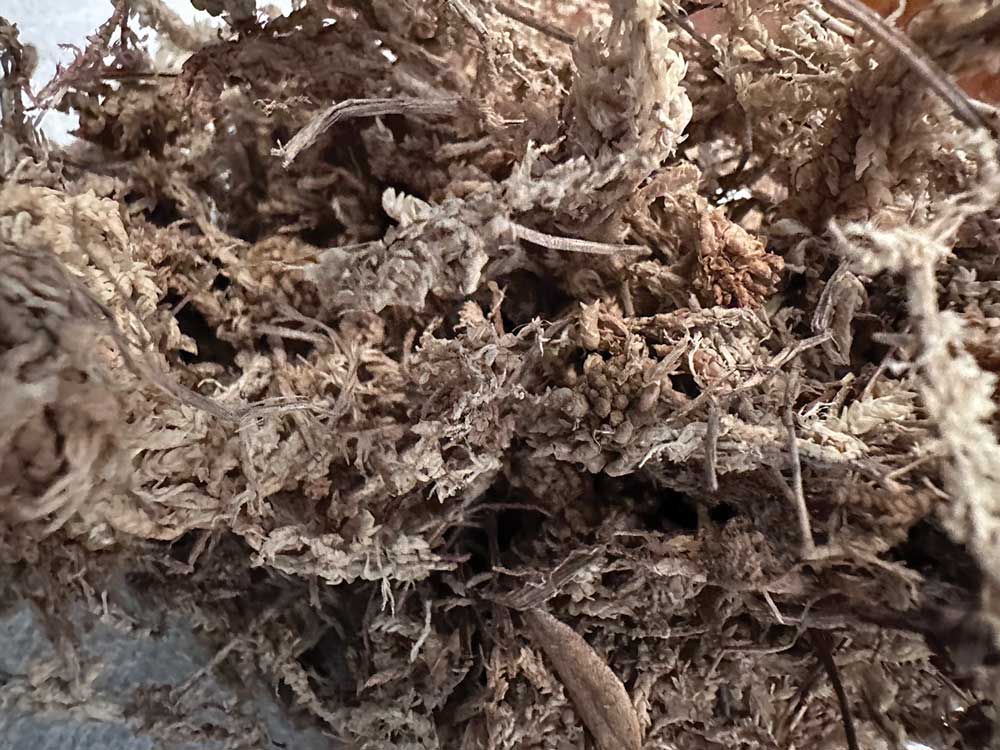
Sphagnum moss can be used for bioactive terrariums as a “soil conditioner” in order to balance the pH levels of the soil and environment within the terrarium.
While this substrate creates a nice natural floored landscape, it can also be used to create hiding places or egg-laying areas to contribute to incubation. Many companies sell sphagnum moss in decently sized quantities. Just choose the size based on your enclosure size. It’s ideal for animals that need more humid environments than others, such as frogs, toads, humidity loving snakes, rainforest geckos and salamanders, and is great for other herps and live plants as well. It is mixed with other soils to create a bioactive substrate for bioactive enclosures.
Aspen Bedding
Aspen bedding is a natural, non-toxic substrate bedding that is made of soft wood shavings that come from aspen trees. It’s considered a green product and completely safe to use, being 100% natural and hypo-allergenic. On top of that it is super absorbent and odorless which makes it a great bedding for animals.
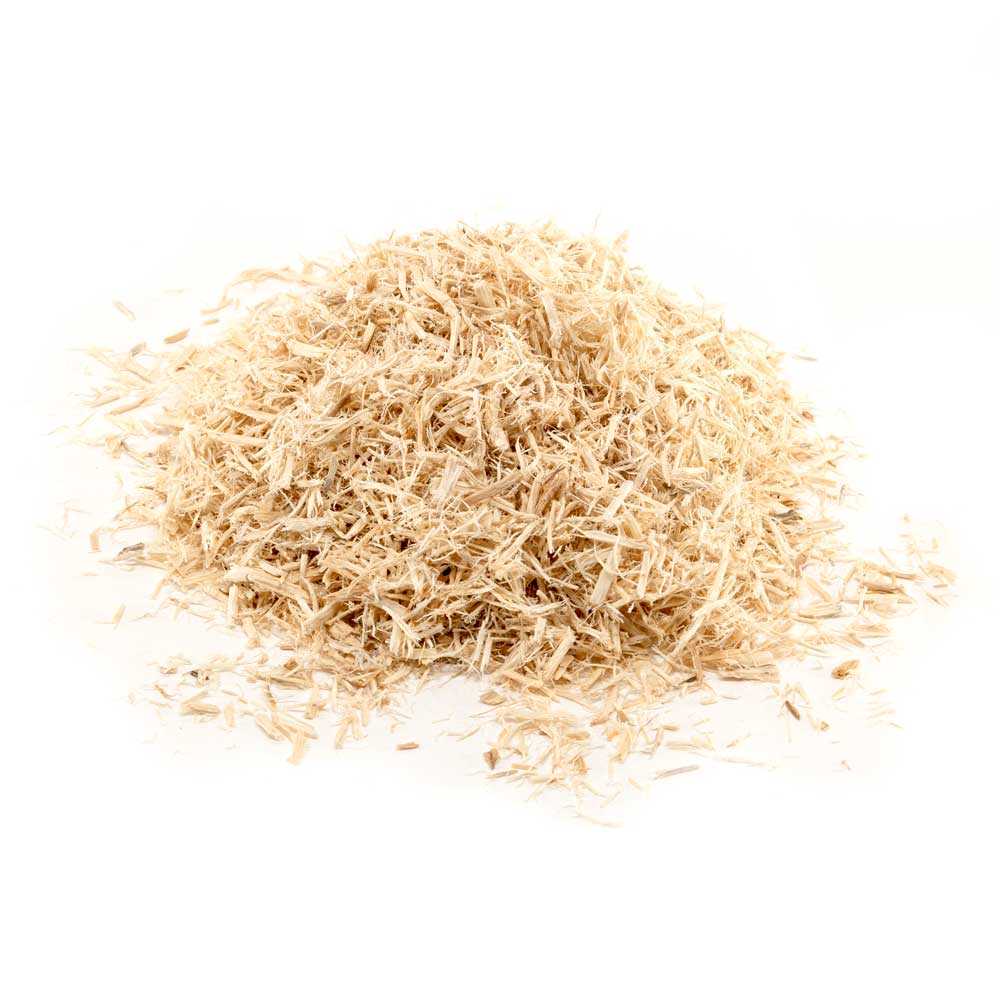
Aspen bedding is a popular substrate as it soaks moisture and also provides tunneling capabilities. Image courtesy ZooMed.com
Because aspen bedding is so soft, this substrate makes for great burrowing material for snakes and other animals that like to hide or nest in. It’s great for snakes especially, but it can also be used for other animals such as certain lizards, tortoises, turtles, tarantulas, and insects. It’s easy to clean and maintain since it’s a loose chip material. Spot cleaning is easy. It contains no toxic and harmful oils like other types of wood beddings.
Coconut Coir (coco coir or coconut husk)
Coconut coir, or coconut husk is a byproduct that comes from coconuts and can be used as a soil bedding for your animals. It is made of the fibers of coconut and is 100% natural and renewable. It does a good job at retaining moisture and humidity in enclosures, while also being resistant to mold. This makes it ideal for herps that require a high humidity environment.
This brown, soft substance creates a natural look for any terrarium. It is an ideal bedding for some herps such as chameleons, rainforest geckos, frogs, toads, and for plants in a bioactive ecosystem.
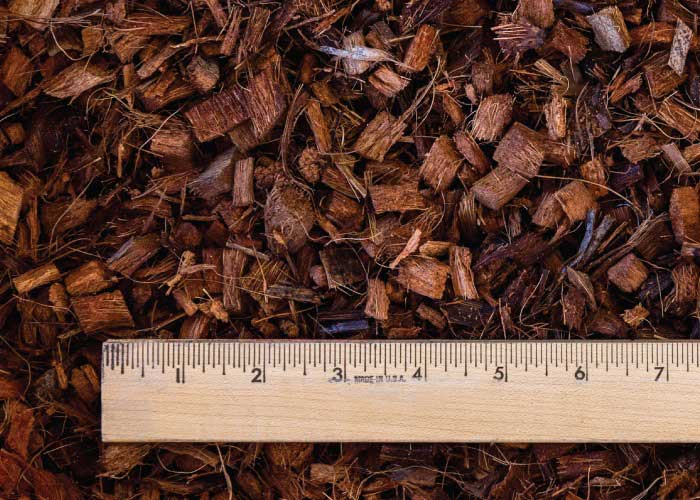
Coconut coir is available in a variety of sizes. image courtesy https://prococo.com
Reptile Bark
Reptile bark is a type of substrate for terrariums made from the bark of fir trees. It is designed to absorb moisture and then release it into the terrarium. This helps with creating a nice humid environment for herps. Different brands of reptile bark come in different sizes, some are more chunkier and some are more fine. All sizes serve the same purpose of retaining humidity.
This substrate creates a natural look for any terrarium. Because of its ability to retain moisture and humidity, it makes for an ideal substrate to use with certain geckos, turtles and certain snake species. Some brands are more fine than others, but it makes for great variety to customize each terrarium environment, having larger chips or more fine small chips. It’s great for burrowing and easy to clean.
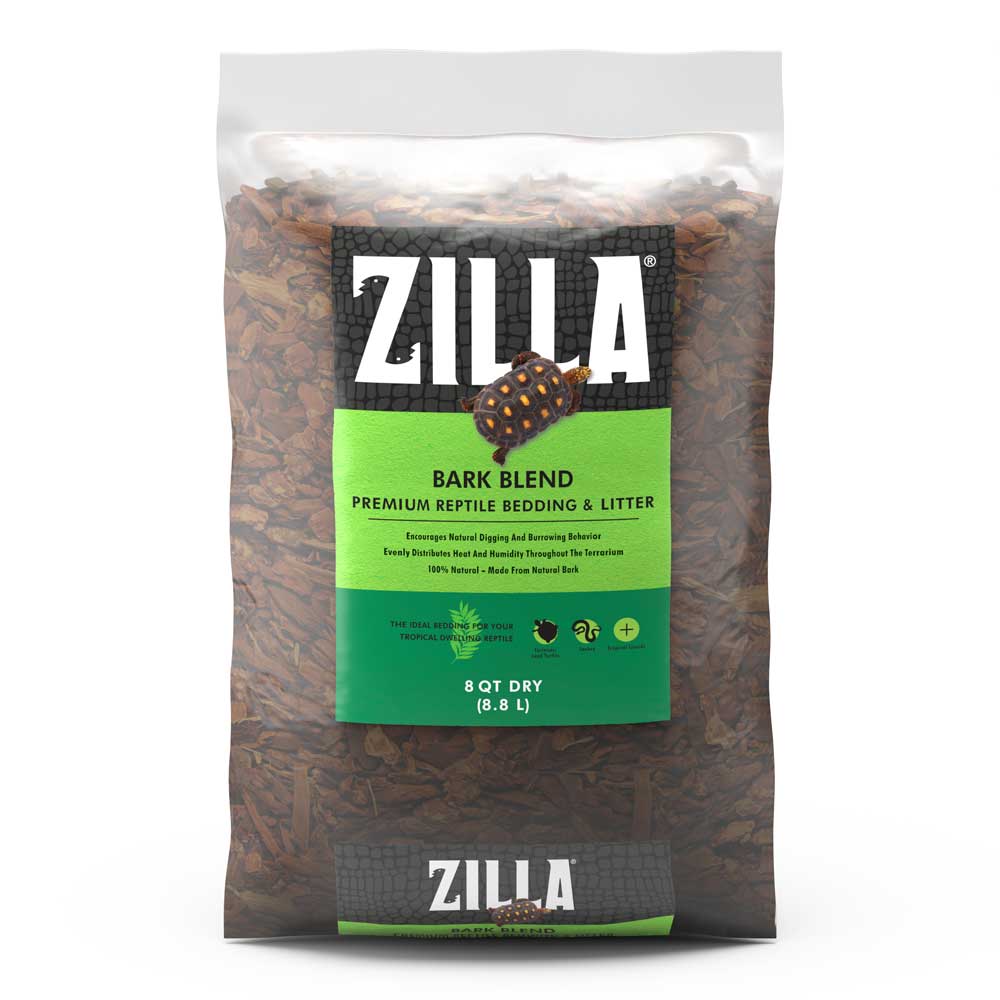
Reptile bark is designed to absorb moisture and then release it into the terrarium. Image courtesy Zillarules.com
Sand
Sand is a very fine substrate that is generally a desert sand with no added dyes or chemicals. Usually found in natural and white colorations, it serves as a great substrate to create natural environments in terrariums. Some brands also have alternatives to actual sand, such as ground walnut shells, that won’t scratch the glass of a terrarium. This substrate creates a natural look that is ideal for desert terrarium as well as certain aquatic turtle applications. It’s ideal for herps such as adult bearded dragons, skinks, sand boas, as well as desert lizards. It can also be used as a substitute substrate for egg laying under certain conditions and is a great conductor for heat.
Cypress Mulch
Cypress mulch is a mix of barks, fir shavings, sand and peat moss that enables you to create a naturalistic or bioactive terrarium with a mix of other substrates. It’s great for retaining moisture and humidity levels. This substrate is also good at absorbing odors and is easy to line the floor of a terrarium and clean as needed. Designed to mimic a “forest floor,” this substrate is great for snakes, amphibians, frogs, and other tropical herps. It is also used in bioactive rainforest terrarium set ups and is a benefit to planted tropical plants. Its ability to retain humidity levels makes it perfect for these herps while also keeping a natural look.
Terrarium Liners
Terrarium liners are simple roll out carpet like fillers that line the bottom of terrariums. They’re designed to be absorbent, non-abrasive, and odor reducing carpets that are easy to cut to fit the bottom of terrariums. It’s designed so that it doesn’t irritate reptiles and can be cleaned and washed as needed. Being one piece rather than a loose substrate, it prevents animals from accidentally ingesting the bedding.
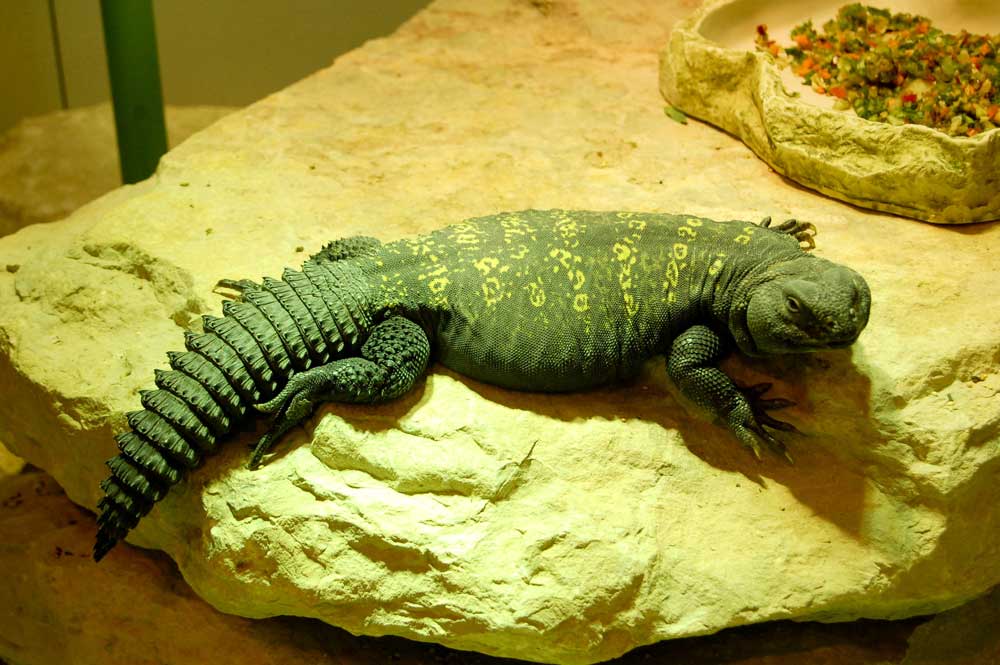
A uromastyx thermoregulates on a rock. Photo by Naaman Abreu/Shutterstock
Because of its low maintenance and easy to cut and fit process, it creates an easy bedding substrate for certain herps. It’s an alternative to other substrates, and is especially useful for juvenile herps because they can’t accidentally ingest it. Often sold in different colors like green or tan/brown, it can be used to customize the floor of any terrarium for your reptiles. The application of terrarium liners are ideal for arboreal herps that spend minimal time on the ground.
Aquatic Substrates
Aquatic substrates, often found in forms of pebbles, are used to line the bottom of aquatic terrariums. These substrates help create a natural river bed-like look for these terrariums. They come pre- washed and are easy to clean and usually don’t need to be changed out like other land terrarium substrates. An aquarium siphon helps to clean them. Other types of aquatic substrates come in forms of sands that are also great for lining the bottom of aquatic terrariums, having similar aspects that aquatic pebbles hold, just in the form of a sand substrate rather than rock substrate.
Since most of these substrates are designed to mimic a natural river bed, they often come in natural colors like grays, blacks, whites, and browns. They’re great for terrariums that house herps such as red-eared sliders, amphibians and other aquatic species. However, soft-shelled turtles are recommended to only use the sand substrates. These substrates can also be good for aquatic fish and other aquatic herps such as aquatic frogs and salamanders.
Clay Substrates
Clay substrates are used to line the bottom or under parts of a terrarium that can be manipulated to allow for burrowing or tunneling, making it ideal for those herps that burrow and tunnel. They are also used to create an underground lining for water in a terrarium. Clay substrates, especially the “ball” type substrates are used in the creation of false bottoms for bioactive enclosures. Clay helps retain humidity and moisture for animals that need humid environments to thrive.
Cork Bark
Cork bark is not a substrate like those mentioned, unless of course you lay some cork flats down to cover the surface area of the terrarium. They are ideal in that they can be placed vertically or horizontally in an enclosure, which gives your herps some nice options to crawl up and bask, hide underneath or just sleep inside. Cork bark is made of outer layers of bark tissues, from the Quercus suber, a type of oak tree native to southwest Europe and northwest Africa. Cork bark is primarily harvested to be used for commercial use, such as terrarium displays. Harvesting the bark from the tree does not harm the tree as it is something that the tree regains over time. Cork bark not only gives your terrarium a more natural look, it’s also biodegradable.
Not only does cork bark serve as nice natural additions to your terrariums but they can also provide animals with nice hiding places while also giving the terrarium a more naturalistic look to them. Mimicking the shape of a log or tunnel, cork bark serves as a dark and cool place for animals to hide away and burrow or nest. Cork flats are essentially half logs that can be laid horizontally across a terrarium to serve as basking or hiding spots. It is fairly easy to take care of and can last years. It’s natural, easy to maintain, and an overall good addition for naturalistic and bioactive terrariums.
Bioactive Substrates
Bioactive substrate is a combination of four mediums to make a substrate that enables plants to flourish. The most popular bioactive substrate is ABG mix, which is named after the Atlanta Botanical Garden where it was originally developed. This mix offers excellent drainage and aeration that helps keep plant roots healthy. It offers good water retention, retains nutrients well, doesn’t not compact as much as other substrates and is long lasting. ABG mix is comprised of 1 part sphagnum moss, 2 parts tree fern fiber, 2 parts orchid bark, 1 part peat moss, and 1 part charcoal. There are many variations of ABG mix, with some adding other ingredients and others subtracting certain ingredients. It is very easy to create your own ABG mix, but if you aren’t inclined to do so, many companies offer their own version of the standard for bioactive enclosures.

